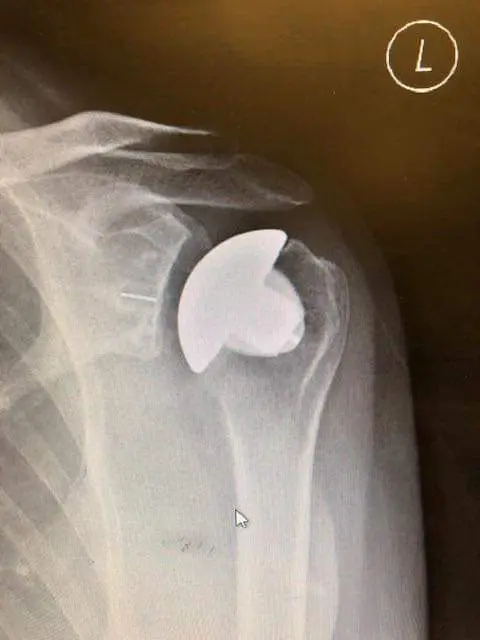Osteoarthritis is the process of “wear and tear” of the articular cartilage, the formation of bone spurs and the progressive deterioration of the joint.
Degenerative disease (osteoarthritis) of the shoulder joint – causes
As a disease resulting from wear and tear of the joint, the most common cause is the patient’s age – the disease is usually diagnosed in patients over 50-60 years of age. In addition, overload, injuries, operations, and genetic factors may affect the development of the disease.
Degenerative disease (osteoarthritis) of the shoulder joint – symptoms
Increasing pain and gradual limitation of the range of motion are typical symptoms reported by patients. With time, a very painful “crunching” appears, and the ailments may limit daily functioning.
Degenerative disease (osteoarthritis) of the shoulder joint – diagnosis
The history of the ailments, the patient’s age, limited range of motion in certain directions and joint crepitation during the clinical examination allow for a preliminary diagnosis. Osteoarthritis is easy to confuse with another shoulder condition – so-called “frozen shoulder”, therefore it is necessary to undergo X-ray, which perfectly shows degenerative changes. In case of doubts or planning surgery, it is also recommended to undergo magnetic resonance imaging or computed tomography.
Degenerative disease (osteoarthritis) of the shoulder joint – treatment
In the initial stage of the development of degenerative changes, exercises under the supervision of a physiotherapist are very important, as they will maintain the range of motion of the joint as long as possible. It is also recommended to keep up physical activity – swimming or yoga.
As the changes progress, the ailments can become bothersome. Relief is brought by periodic administration of anti-inflammatory drugs, analgesics and intra-articular injections.
Types of injections:
- Corticosteroids (so-called blockades) – have anti-inflammatory and analgesic effects. They reduce pain for a period from several weeks to many months. They can be repeated 2-3 times a year, but with time their effects decrease;
- Hyaluronic acid – they are a good solution at the initial stages of a degenerative disease. They are a kind of “lubricant” that facilitates movements in the joint. They are often administered in conjunction with a corticosteroid;
- Platelet-rich plasma (PRP) – a concentrated substance of growth factors. It is obtained by centrifuging the patient’s own blood and separating the red blood cells from the plasma factors. Platelet-rich plasma has an inflammatory-modulating effect and potentially disease-altering. A very good analgesic effect was also shown in clinical trials performed in arthrosis of the knee joint. As a rule, 3 injections are given with an interval of one week.
In case persistent symptoms cannot be eliminated by medical treatment, surgery should be considered.
There are two basic methods of surgical treatment depending on the degree of development of degenerative changes.



